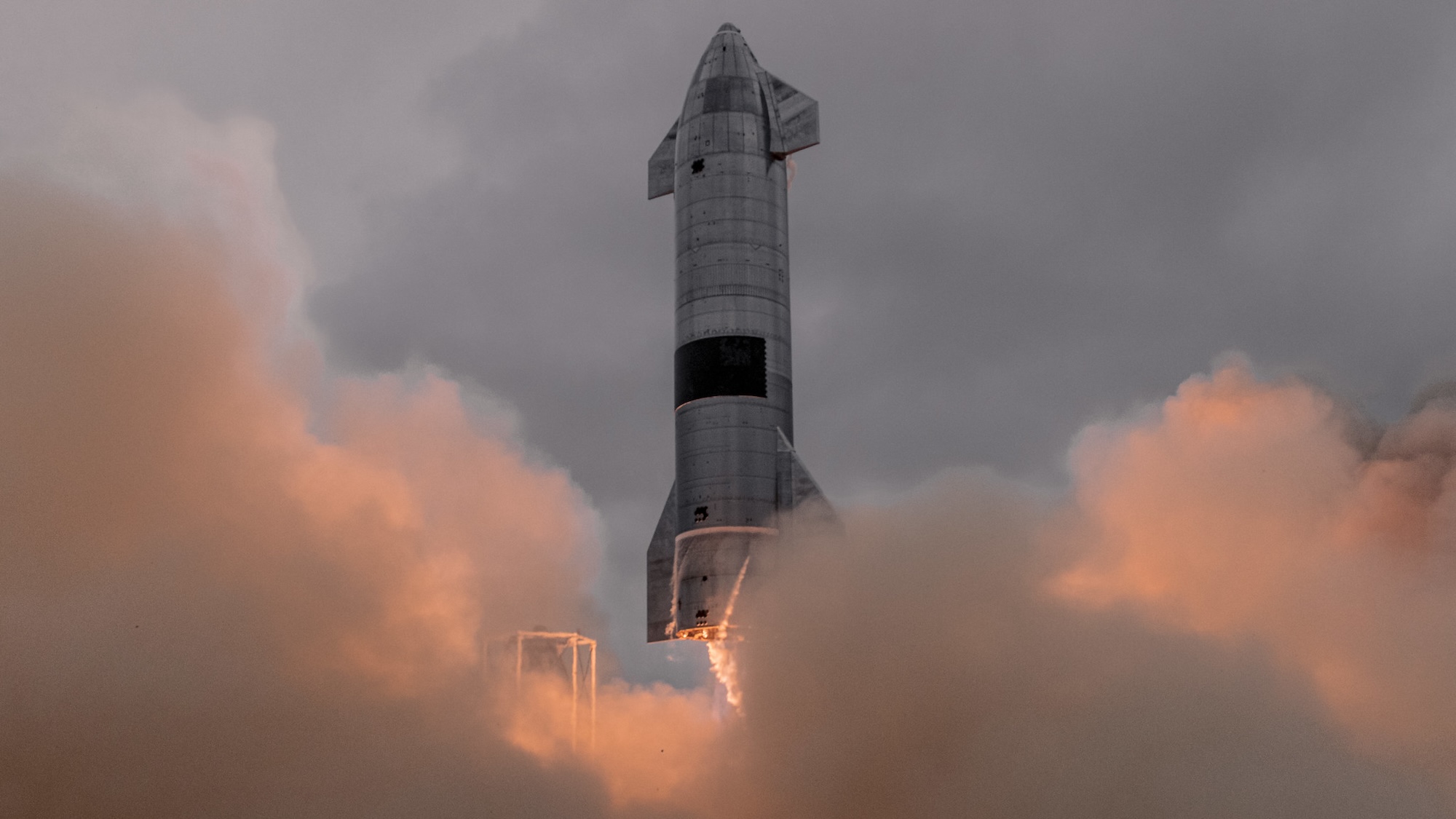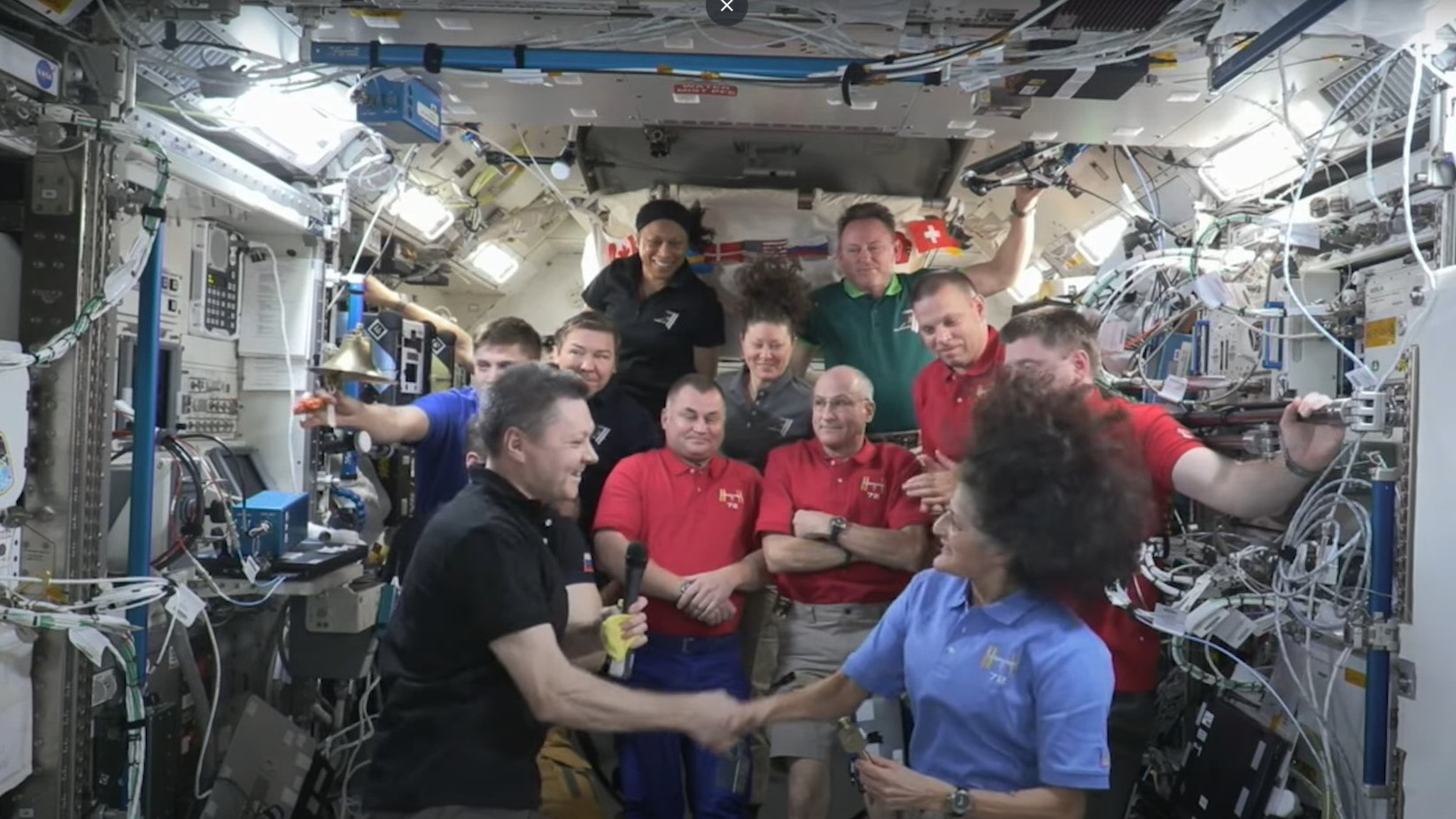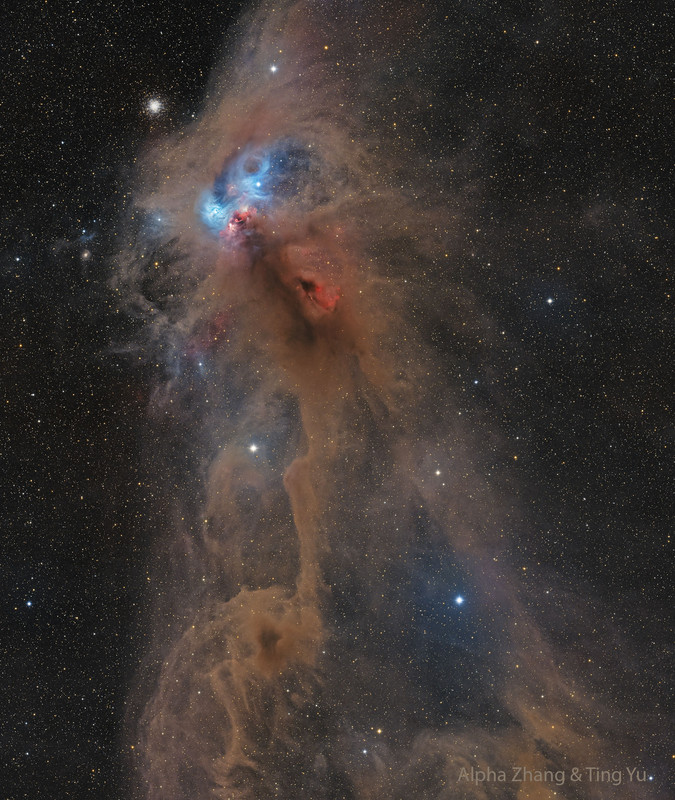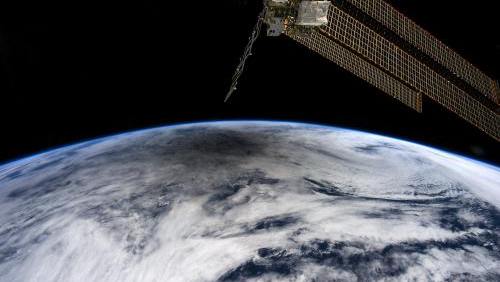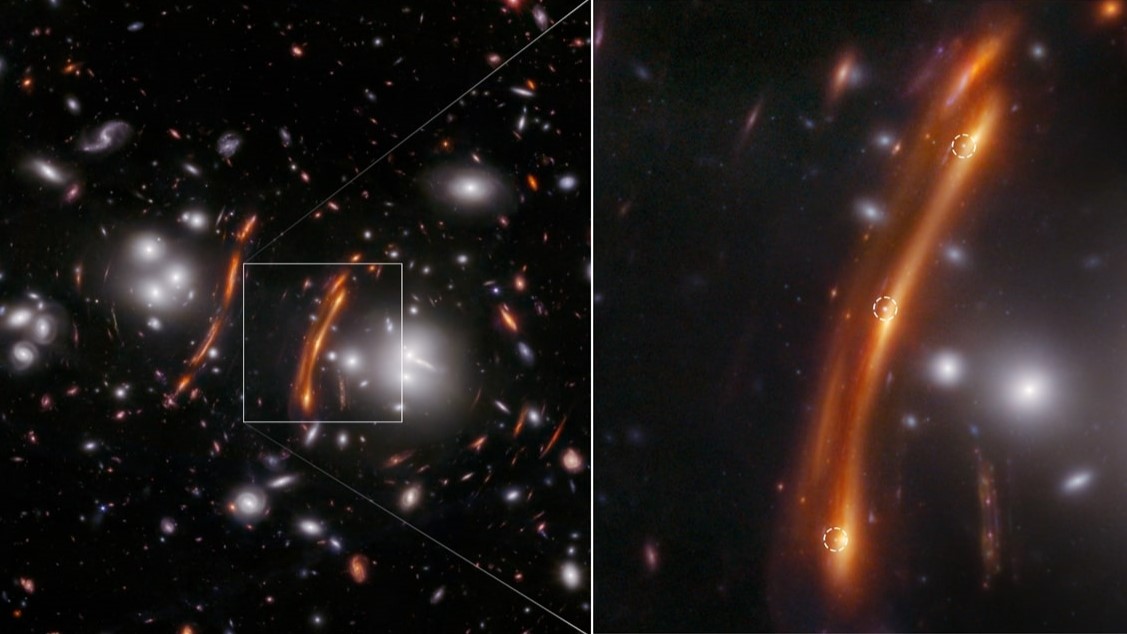Another veil for
@NYC_Frank
New stars are born from the remnants of dead stars. The gaseous remnant of the gravitational collapse and subsequent death of a very massive star in our Milky Way created the G296.5+10.0 supernova remnant, of which the featured Mermaid Nebula is part. Also known as the Betta Fish Nebula, the Mermaid Nebula makes up part of an unusual subclass of supernova remnants that are two-sided and nearly circular. Originally discovered in X-rays, the filamentary nebula is a frequently studied source also in radio and gamma-ray light. The blue color visible here originates from doubly ionized oxygen (OIII), while the deep red is emitted by hydrogen gas. The nebula's mermaid-like shape has proven to be useful for measurements of the interstellar magnetic field.

Spanning light-years, this suggestive shape known as the Seahorse Nebula floats in silhouette against a rich, luminous background of stars. Seen toward the royal northern constellation of Cepheus, the dusty, dark nebula is part of a Milky Way molecular cloud some 1,200 light-years distant. It is also listed as Barnard 150 (B150), one of 182 dark markings of the sky cataloged in the early 20th century by astronomer E. E. Barnard. Packs of low mass stars are forming within, but their collapsing cores are only visible at long infrared wavelengths. Still, the colorful Milky Way stars of Cepheus add to this stunning galactic skyscape.
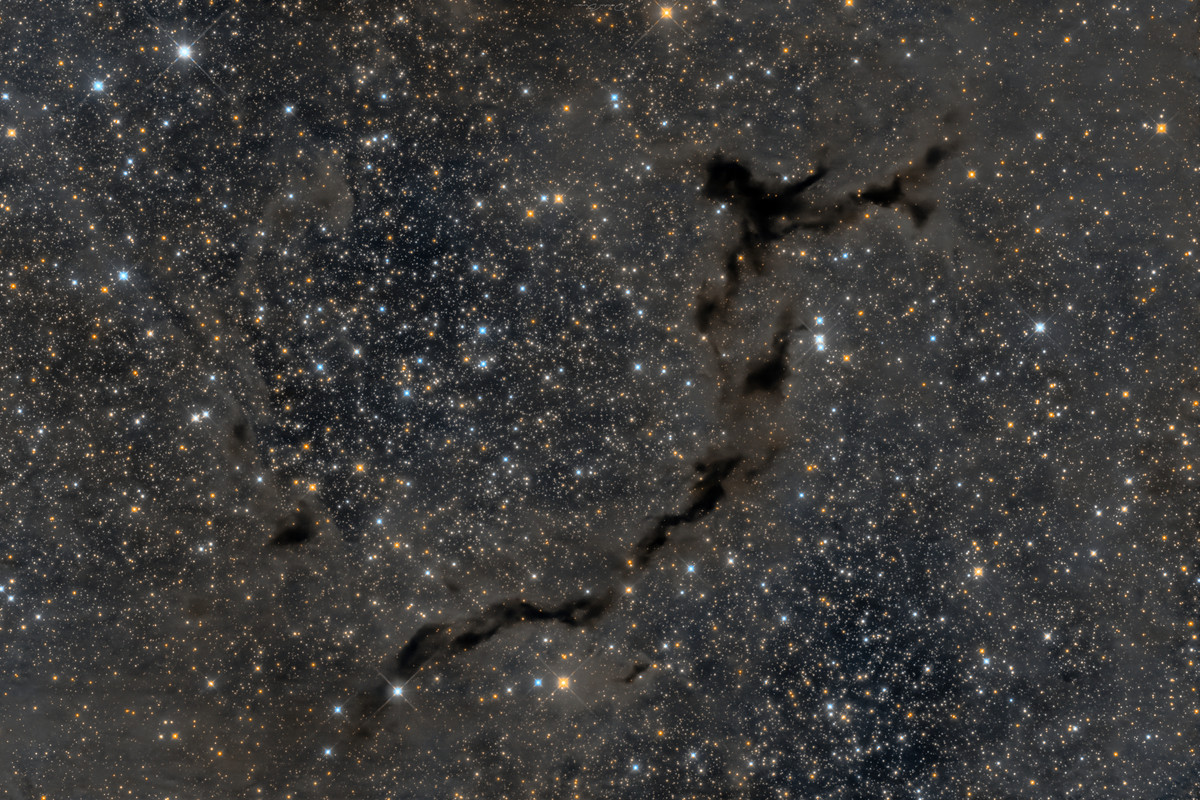
Exploring the gas cloud known as IC2948 means finding your way across countless nascent stars born in this enormous stellar nursery. And yet, this is just a snippet of a much larger object: the Running Chicken Nebula. This nebula spans an area on the night sky close to 25 full moons, and yet, the area you see here is not even a third of a full moon. Obtaining such a detailed snippet of the nebula was possible thanks to a 1.5-billion-pixel image taken by the VLT Survey Telescope (VST), hosted and operated by ESO.
Located in the constellation of the Centaur (Centaurus), the Running Chicken Nebula is a labyrinth of gas, dust and young stars whose highly intense radiation erodes away the surrounding material. The gas cloud IC2948 is the brightest region of the nebula. Here, we find creeping dark clouds, shaped like open hands about to grab their surrounding blooming stars.
First discovered more than a century ago, this gas cloud is helping us understand how stars form and behave during their infancy. To spot IC2948 within the much larger Running Chicken Nebula, locate the chicken’s rear end (or its head, as some people claim). In your search, you may come across other areas like the stunning GUM 41 nebula.
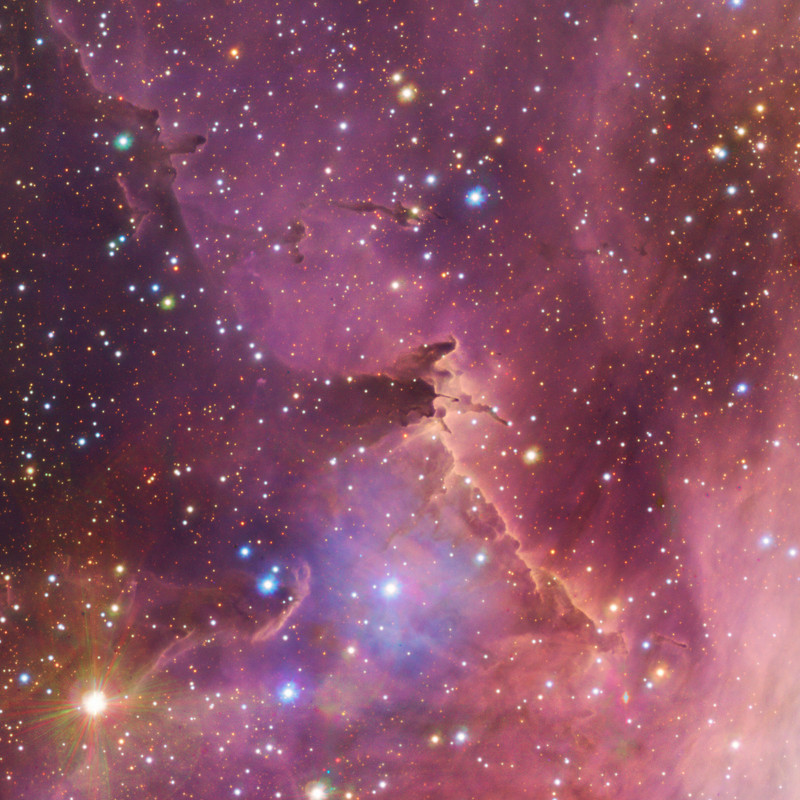
The pair, known jointly as Arp 142, made their first pass between 25 and 75 million years ago — causing ‘fireworks’, or new star formation, in the Penguin. In the most extreme cases, mergers can cause galaxies to form thousands of new stars per year for a few million years. For the Penguin, research has shown that about 100 to 200 stars have formed per year. By comparison, our Milky Way galaxy (which is not interacting with a galaxy of the same size) forms roughly six to seven new stars per year.
This gravitational shimmy also remade the Penguin’s appearance. Its coiled spiral arms unwound, and gas and dust were pulled in an array of directions, like it was releasing confetti. It is rare for individual stars to collide when galaxies interact (space is vast), but the galaxies’ mingling disrupts their stars’ orbits.
Today, the Penguin’s galactic center looks like an eye set within a head, and the galaxy has prominent star trails that take the shape of a beak, backbone, and fanned-out tail. A faint, but prominent dust lane extends from its beak down to its tail.
Despite the Penguin appearing far larger than the Egg, these galaxies have approximately the same mass. This is one reason why the smaller-looking Egg hasn’t yet merged with the Penguin. (If one was less massive, it may have merged earlier.)
The oval Egg is filled with old stars, and little gas and dust, which is why it isn’t sending out ‘streamers’ or tidal tails of its own and instead has maintained a compact oval shape. If you look closely, the Egg has four prominent diffraction spikes — the galaxy’s stars are so concentrated that it gleams.
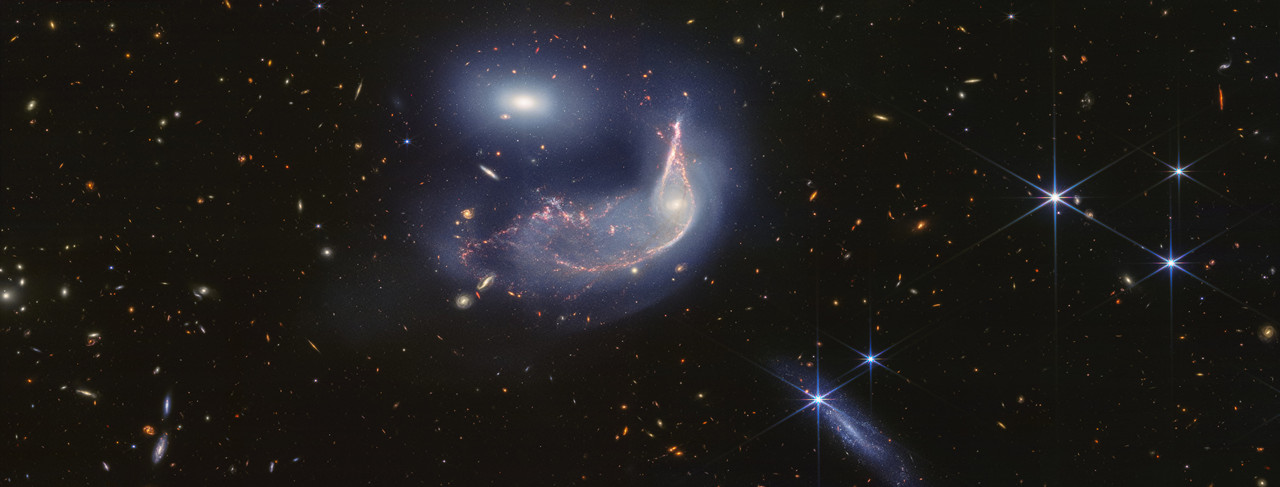
At its heart, as in most spiral galaxies, is a supermassive black hole, but this one is particularly active. Unlike the black hole at the center of the Milky Way, which pulls in wisps of gas only occasionally, Messier 106’s black hole is actively gobbling up material. As the gas spirals towards the black hole, it heats up and emits powerful radiation.
This image was captured with Webb’s Near-InfraRed Camera (NIRCam). This observation was taken as part of a dedicated program to study the galaxy’s Active Galactic Nucleus, the galaxy’s bright central region that is dominated by the light emitted by dust and gas as it falls into the black hole. The blue regions in this image reflect stellar distribution throughout the central region of the galaxy. The orange regions indicate warmer dust and the stronger red hues represent colder dust. The teal, green and yellow tones near the center of the image depict varying gas distributions throughout the region.
The galaxy has a remarkable feature – it is known to have two “anomalous” extra arms visible in radio and X-ray wavelengths, rather than in the visible. Unlike the normal arms, these are composed of hot gas instead of stars. Astronomers believe these extra arms result from the black hole’s activity, a feedback effect seen in other galaxies as well. They are likely caused by outflowing material produced by the violent churning of gas around the black hole, creating a phenomenon analogous to a wave crashing up out of the ocean when it hits a rock near the shore.
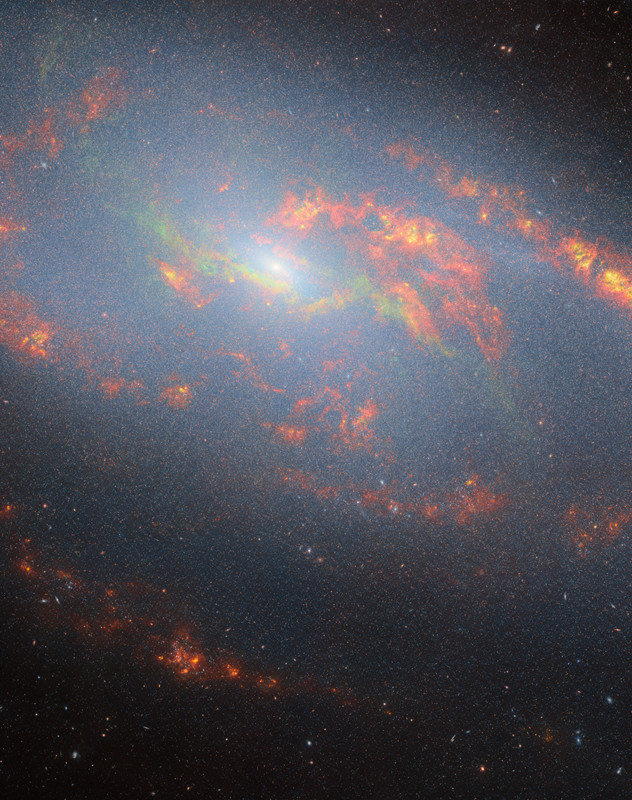
The dark Horsehead Nebula and the glowing Orion Nebula are contrasting cosmic vistas. Adrift 1,500 light-years away in one of the night sky's most recognizable constellations, they appear in opposite corners of the above stunning mosaic. The familiar Horsehead nebula appears as a dark cloud, a small silhouette notched against the long glow of hydrogen -- here shown in gold -- at the lower left. Alnitak is the easternmost star in Orion's belt and is seen as the bright star to the left of the Horsehead. Just below Alnitak is the Flame Nebula, with clouds of bright emission and dramatic dark dust lanes. The magnificent emission region, the Orion Nebula (aka M42), lies at the upper right. Immediately to its left is a prominent reflection nebula sometimes called the Running Man. Pervasive tendrils of glowing hydrogen gas are easily traced throughout the region.
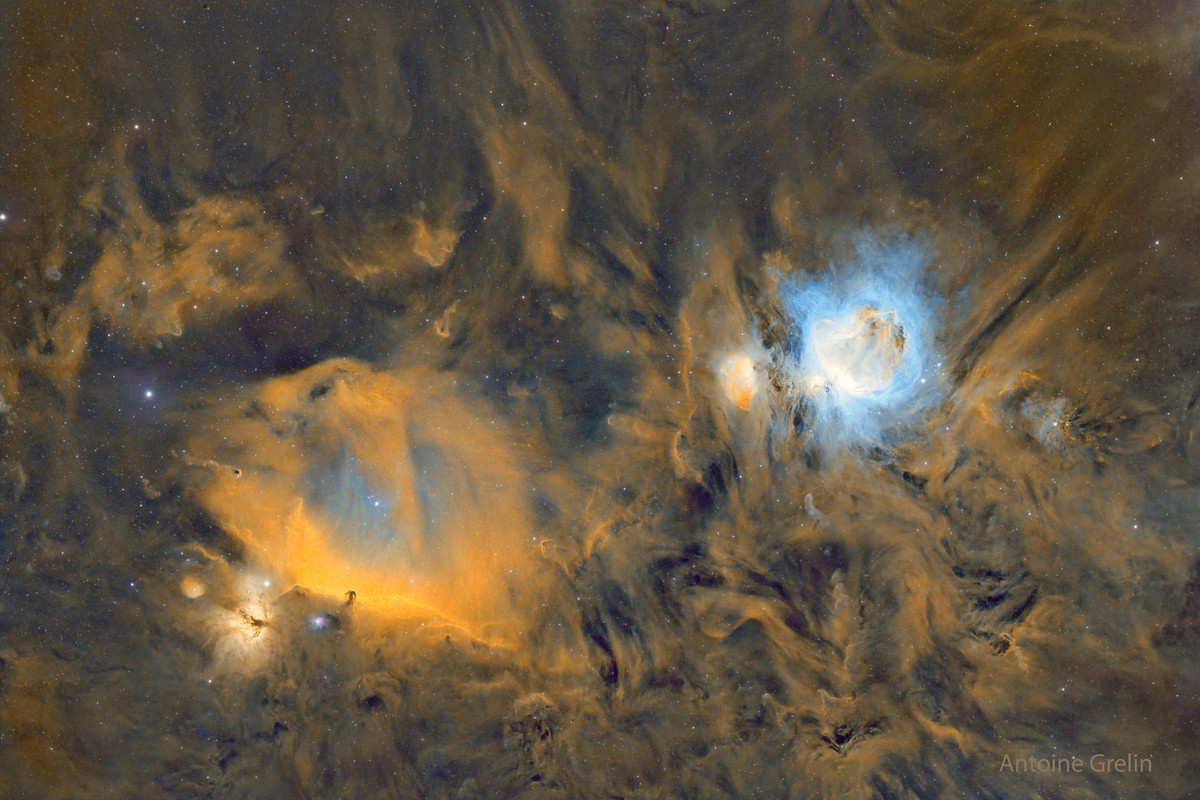
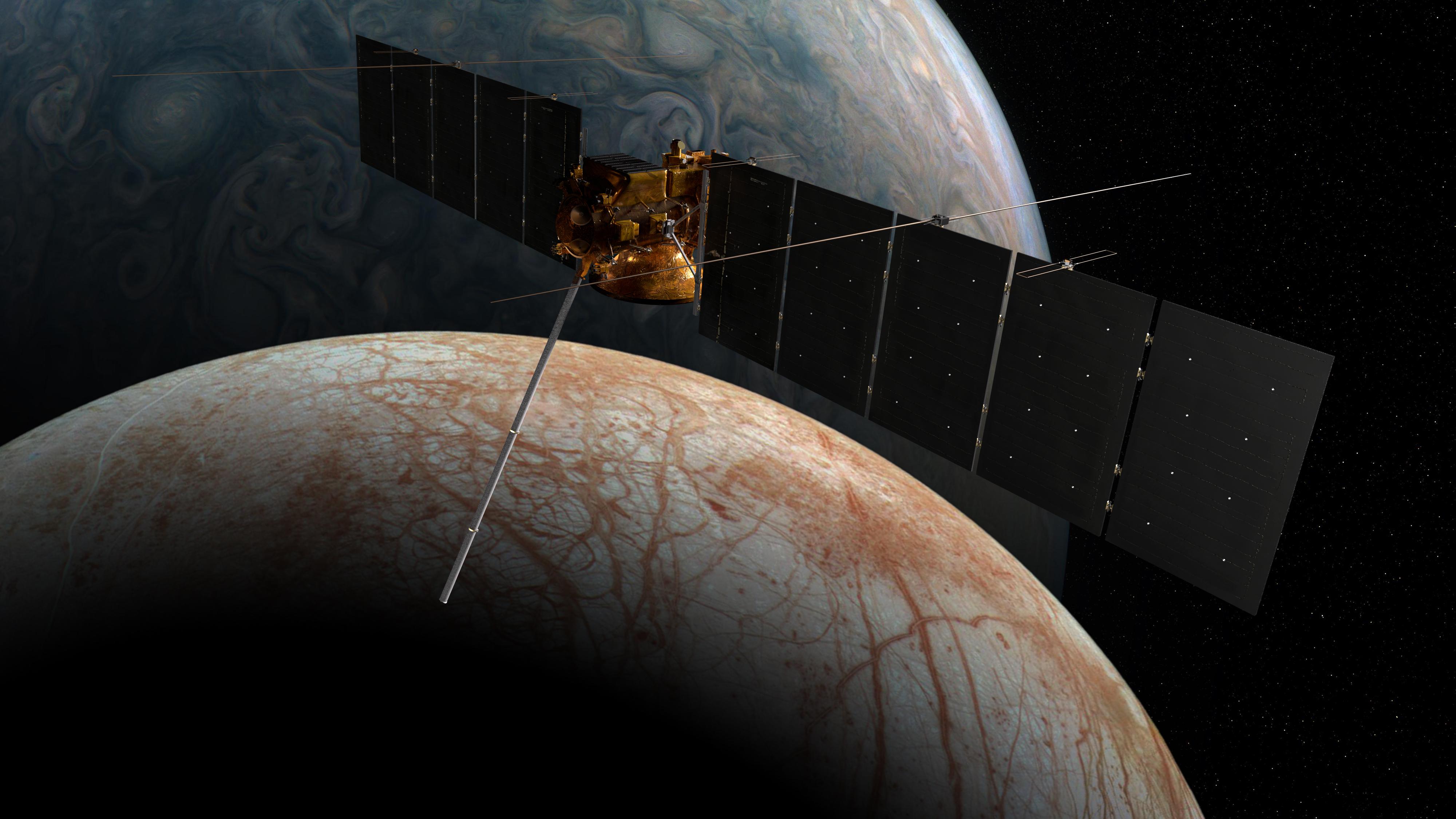
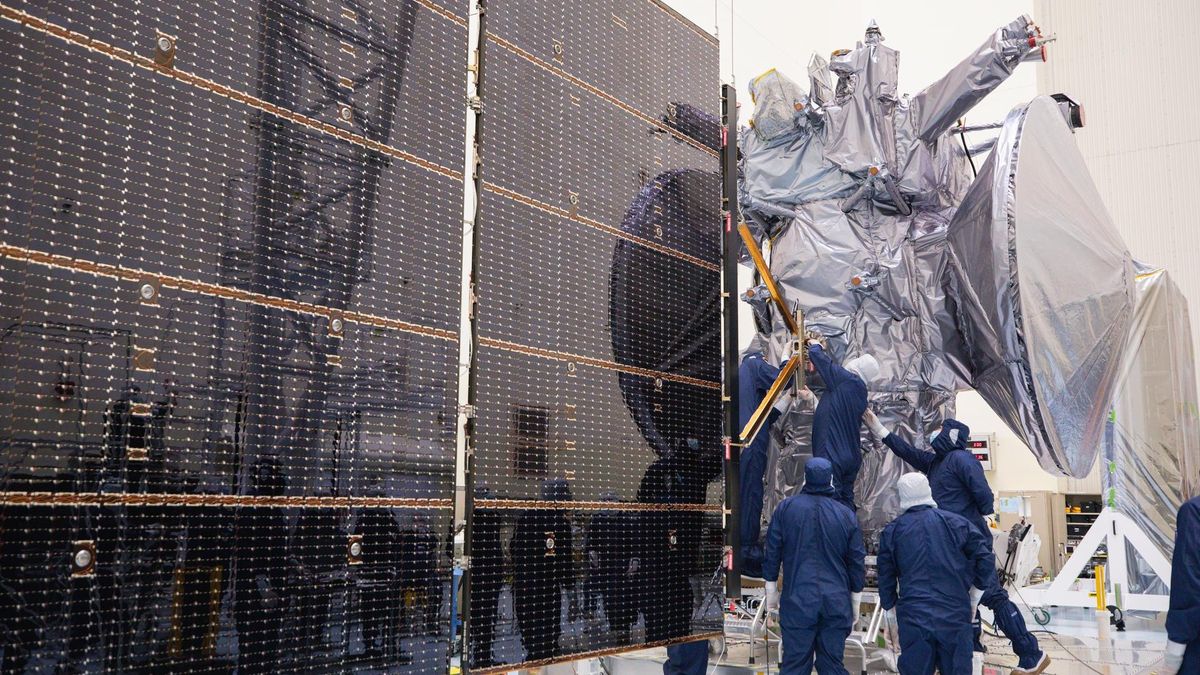


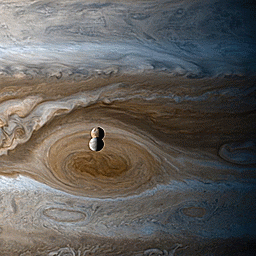
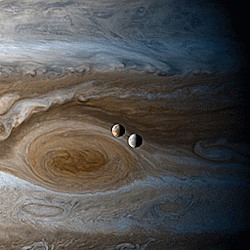
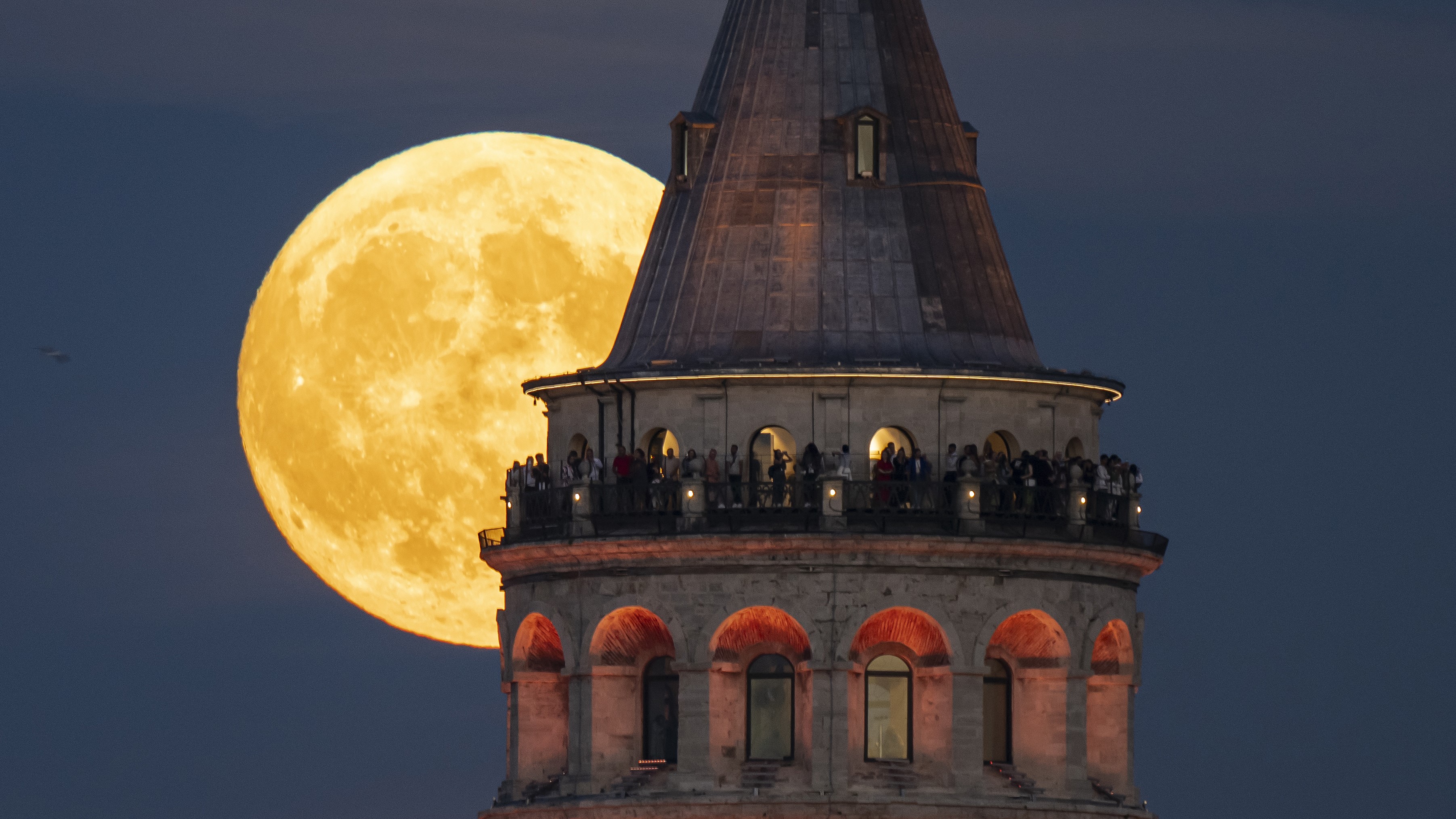







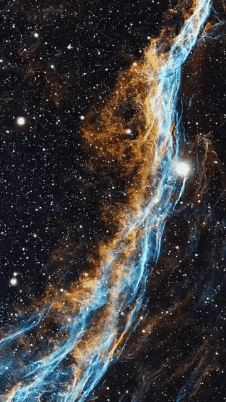

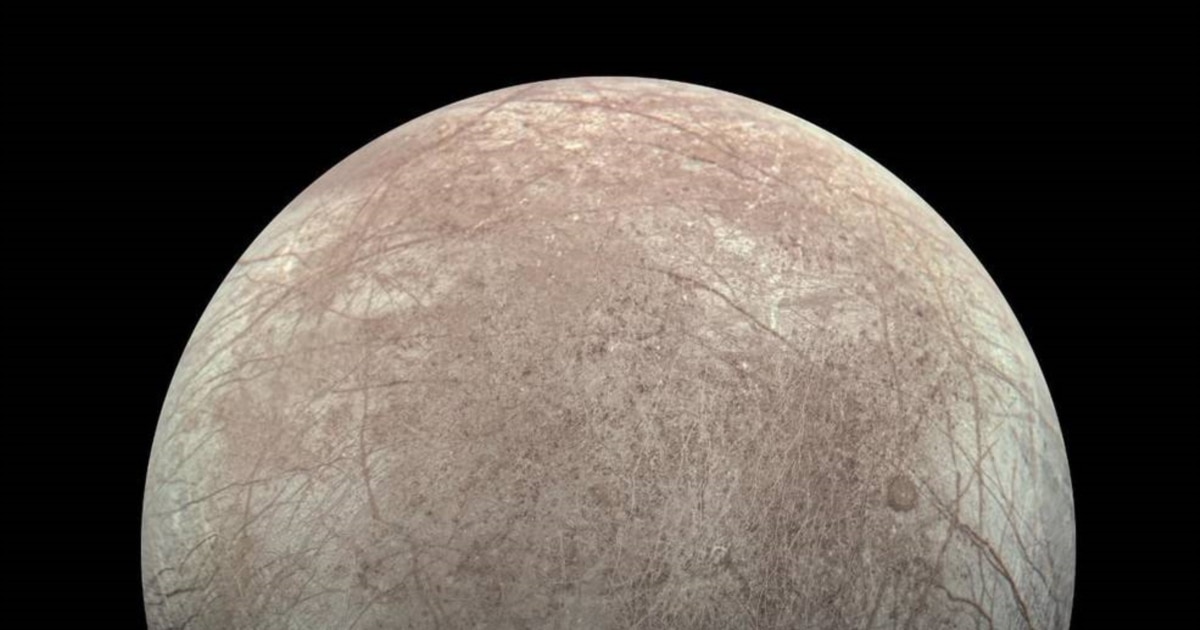



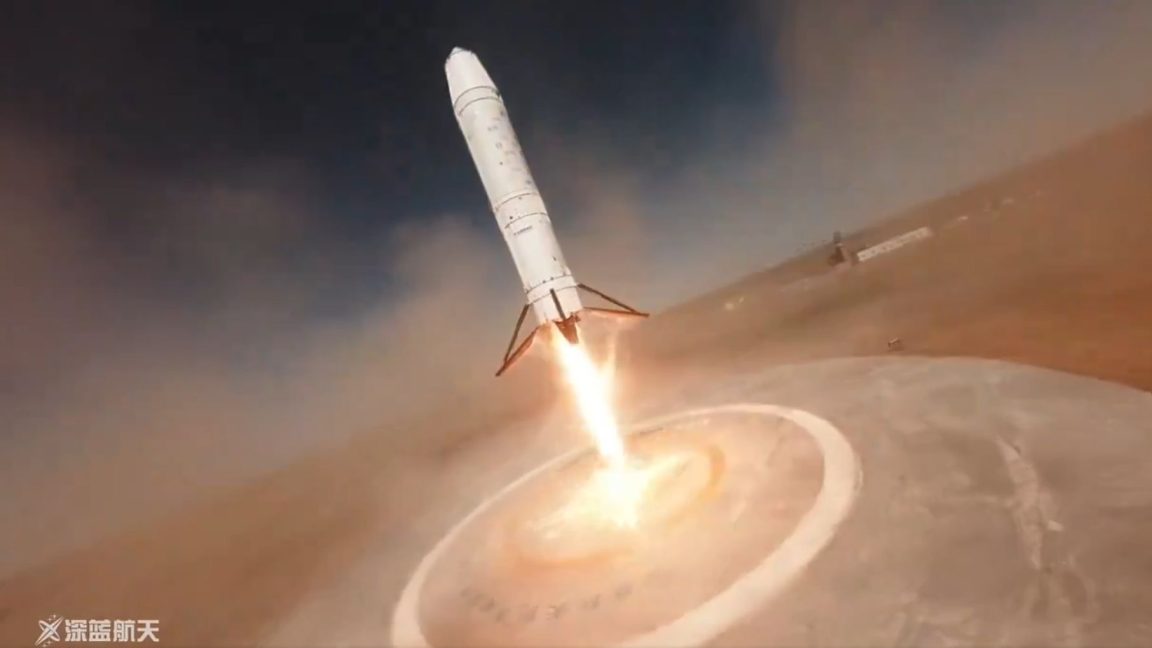
 arstechnica.com
arstechnica.com



